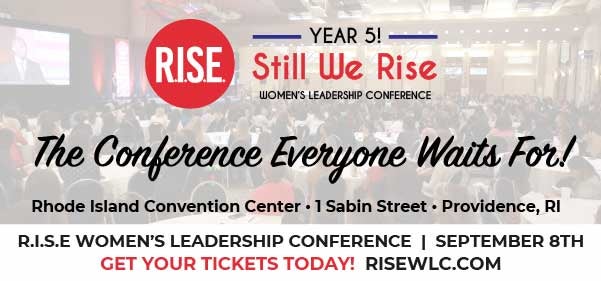Search Posts
Recent Posts
- Cranston Councilor Germain’s resignation charges get swift response, call for investigation April 18, 2024
- We Cook! Mill’s Tavern Short Rib Sage Polenta April 18, 2024
- Rhode Island Weather for April 18, 2024 – John Donnelly April 18, 2024
- Providence: A new culture in City Hall – Mayor Smiley’s FY25 Budget April 18, 2024
- RI Veterans: Did you know? 18.04.24 (100th bday, events, Q/A, fishing, resources) – John A. Cianci April 18, 2024
Categories
Subscribe!
Thanks for subscribing! Please check your email for further instructions.

Strategies for problem solving and the role of leadership – Mary T. O’Sullivan
By Mary T. O’Sullivan, business leadership
“Great things in business are never done by one person; they’re done by a team of people.” – Steve Jobs
In a Harvard Business Review article from 1998, “How to Kill Creativity”, various remedies are offered as antidotes to the lack of creativity pervasive in most corporate cultures. We learn of studies which demonstrate the author’s theories of the three components of creativity which are expertise, creative thinking skills, and the importance of motivation, especially intrinsic motivation. The article seems to promote the concept that leadership is once again a key component of employee performance, and many relevant examples are described.
For one, the tale of Proctor & Gamble’s transformation, demonstrate that when managers provide employees proper latitude, good things happen. The most outstanding example in the story of P&G, is the creation of their Corporate New Venture (CNV) group which brought forth a product that was “designed to provide portable heat for several hours’ relief of minor pain.” Since this article was written in 1998, the product was still under test; however, you may recognize that product today as “Therma Care Heat Wraps”, now sold by Wyeth Labs, and widely available just about anywhere.
P&G’s new product development team, CNV, would not have been possible without the sanctions of management, the self-motivated (all volunteer) workforce, as well as the freedom around “how, when, and where they approached their work”. This example reinforces the author’s theories of providing “challenge, freedom, resources, work-group features, supervisory encouragement, and organizational support”.
Many corporate managers are fearful of such “skunk works” organizations, and I’ve seen these groups created, only to have Profit and Loss obligations imposed upon them. Of course, this P&L approach leads directly to a total lack of creativity but serves to give management that warm fuzzy feeling that those “crazy scientists in the back room” are being productive. I won’t depart down this dirt road now, however, I believe the lack of adequate goal setting or challenge as defined way back in 1998 is the primary reason that many “skunk works” organizations fail.
Strategies to kill creativity include taking a well functioning team and breaking it up to serve the convenience of management agendas, rather than the creative synergy of a team. I’ve heard of teams where a large group of “mutually supportive”, experienced professionals who all worked very well together was broken up. Some teams were diverse groups of people, including several professional, well qualified women, as well as diverse age groups. People in this group all helped each other and fell into the categories explained by the author; Expertise, Creative Thinking Skills, Motivation.
There were people with years of expertise, as well as new people with lots of creative ideas and solutions to invigorate the team. This team worked well together despite poor resources; use of email for archiving and as a main communication tool with suppliers and management, but with an extremely slow and ill functioning, and frustrating email system cramped office areas; slow and byzantine electronic order placement and contract creation systems; continuously malfunctioning printer and copy machines; a faulty lock on the supply cabinets (you need to be a magician to open these), and incompetent management. The team’s expertise offset each other; someone could always answer a question or help another team member. There were experts in international contracting, specialists in the electronic systems, proposal experts, experts in all the deadly details in order placement, and people who just knew how to get things done in a crippling bureaucracy. Since most office space was open, people could often ask a question or give an answer without even having to leave their seats.
This space arrangement, although not private, supports the theory of the importance of “physical space”. Since the management exerted their power, with little or no support for the team from the “leadership”, the once bustling corridors became empty and dark. The team members left behind didn’t have time to help each other, as they were too busy with their own work. The spirit of the group suffered, and people began to feel the pain of losing so many minds to help solve problems. People used instant messaging, but it wasn’t quite the same as popping in each other’s offices or calling across the aisle.
Once a group like this disperses, people report feeling less productive, and certainly don’t feel as if they are learning more or creating more. Anyone relatively new to the group, and who had heavily relied on other members for support in many aspects of the job found themselves lost. Then, people were in the position of forever pestering bosses, who may be patient, but will often direct an employee to another co-worker for assistance. Usually that person is so overwhelmed, that they can’t give enthusiastic support, or the reception people would have shared if there were more voices heard over the office walls.
“A team is not a group of people who work together but a team is a group of people who trust each other.” — Simon Sinek
___
I can’t wait to see you at this amazing conference! The conference is the opportunity for you to:
Learn about Women in Leadership, Financial Literacy, Health and Wellness, Entrepreneurship and Education, and Mentorship and Paying it Forward.
I’ll have a table where I’ll be selling my book,
The Leader You Don’t Want to Be, for a special conference price.
| SAVE THE DATE Thursday, September 8, 2022 At the Rhode Island Convention Center The R.I.S.E. WOMEN’S LEADERSHIP CONFERENCE |
 |
___
Connect with Mary
https://www.facebook.com/Encoreexecutivecoaching
https://www.linkedin.com/in/marytosullivan/
_____
Read all Mary’s columns here: https://rinewstoday.com/mary-t-osullivan-msol-pcc-shrm-scp/

Mary T. O’Sullivan, Master of Science, Organizational Leadership, International Coaching Federation Professional Certified Coach, Society of Human Resource Management, “Senior Certified Professional. Graduate Certificate in Executive and Professional Career Coaching, University of Texas at Dallas. Member, Beta Gamma Sigma, the International Honor Society. Advanced Studies in Education from Montclair University, SUNY Oswego and Syracuse University. Mary is also a certified Six Sigma Specialist, Contract Specialist, IPT Leader and holds a Certificate in Essentials of Human Resource Management from SHRM.
